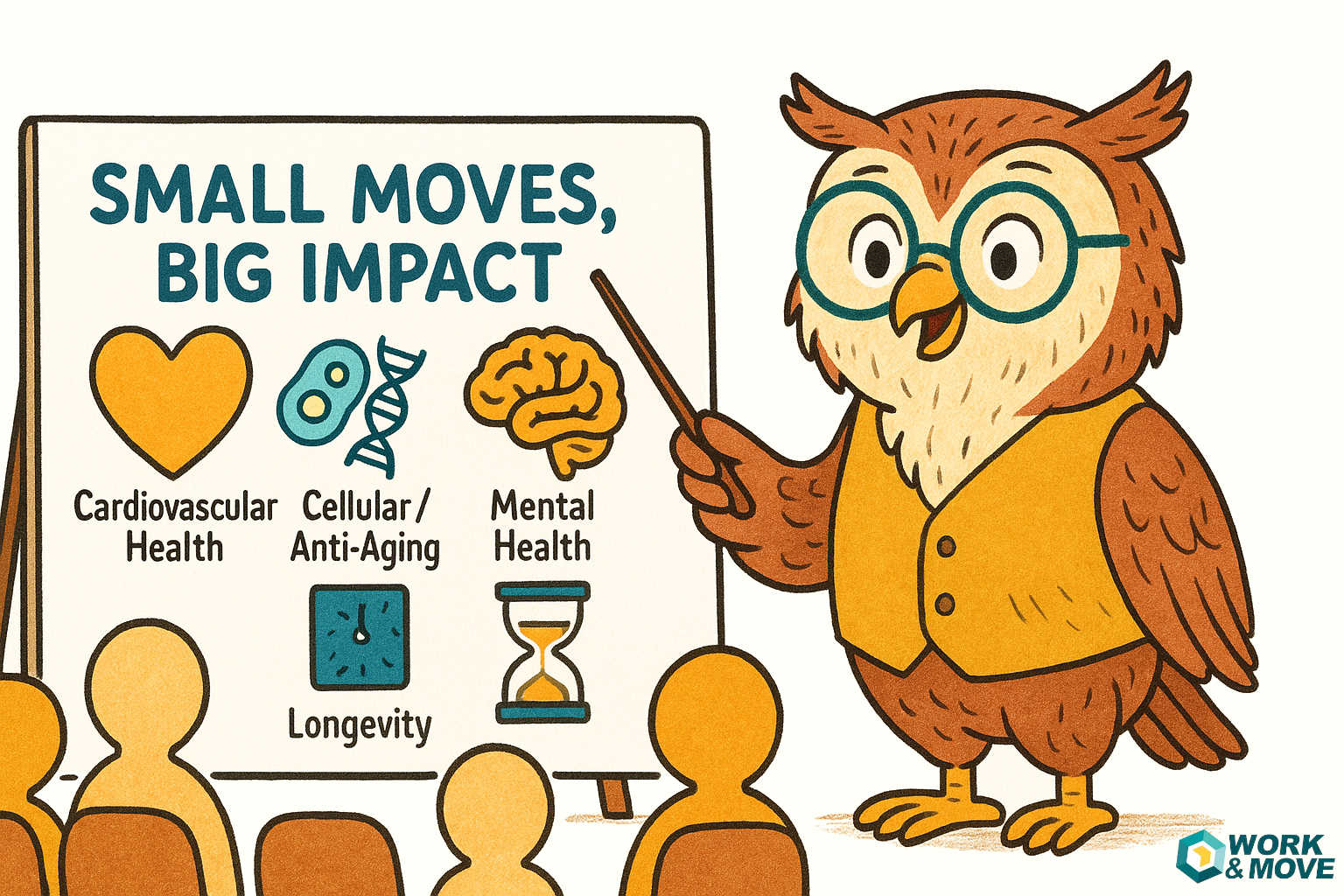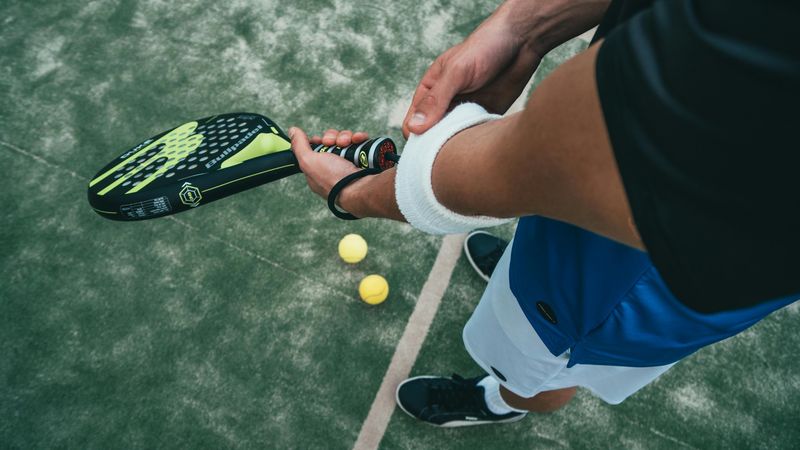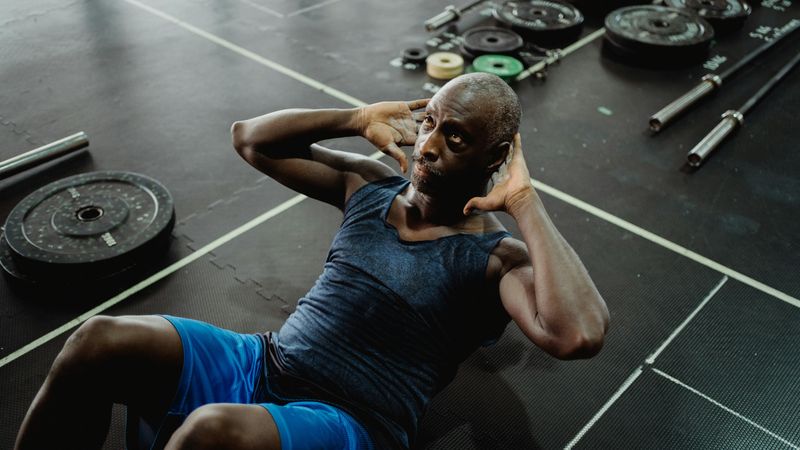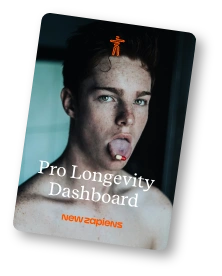A Blind Spot for Longevity: Moderate Physical Activity - Right at Your Desk
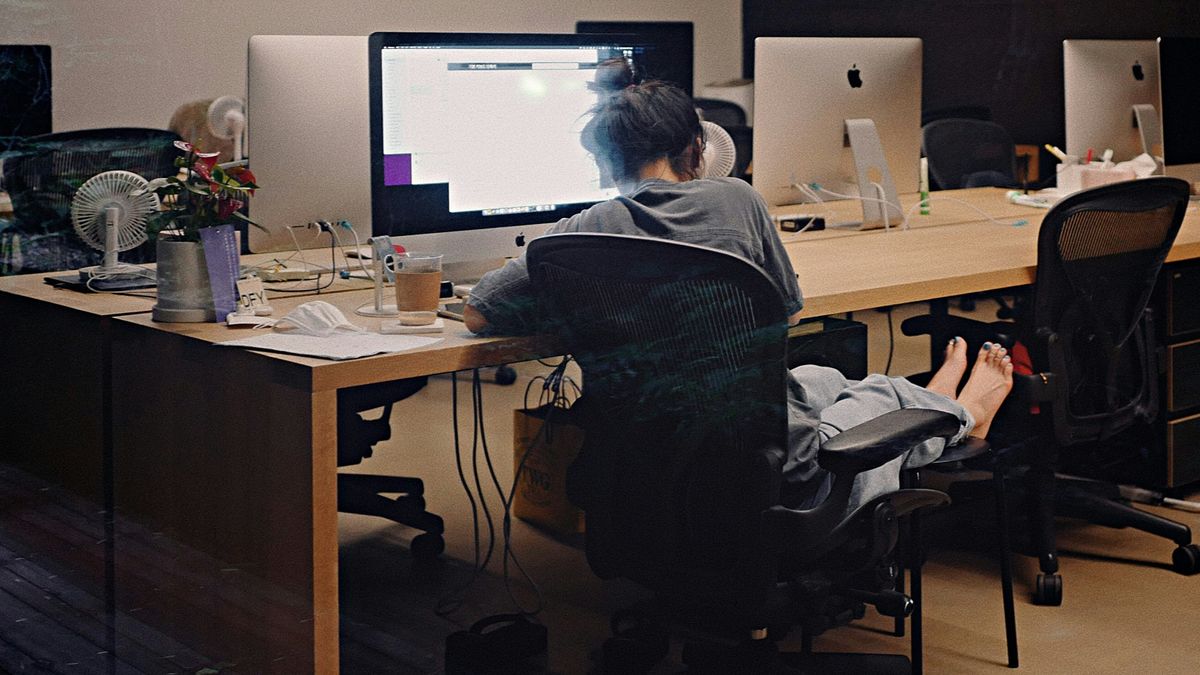
Summary
Most people searching for longevity focus on the obvious: intense workouts, superfoods, or the latest health tech. But what if the real secret to a longer, healthier life is something you’re overlooking every day - moderate movement, right at your desk? As someone who’s spent years exploring every angle of health, I’ll show you why this “blind spot” matters, what the science says, and how you can easily integrate movement into your workday for maximum benefit.
The Usual Suspects and the Hidden Key
If you’ve ever browsed a health magazine or scrolled through longevity blogs, you know the drill:
- Endurance training, strength workouts, flexibility routines
- Personalized medicine, genetic tests, biomarker tracking
- Superfoods, omega-3s, polyphenols
- Meditation, sleep hygiene, stress reduction
- Hormonal balance, wearables, biofeedback, light therapy
These are the “usual suspects” in the world of health and longevity. They’re important, no doubt. But after years of deep-diving into the science and experimenting with every tool and trend, I’ve realized something crucial: most people are searching for their keys under the streetlight, not where they actually lost them.
The real bottleneck for many of us isn’t a lack of knowledge or fancy gadgets- it’s the simple, overlooked act of moving more during our workday. And that’s where moderate physical activity at your desk comes in.
Why Moderate Movement at the Desk Is a Game-Changer
The Science: Small Moves, Big Impact
Let’s get one thing straight: you don’t need to run marathons or spend hours in the gym to reap the benefits of movement. Research consistently shows that just 60 minutes of moderate activity per day- think brisk walking, cycling, or gentle movement at your desk - can dramatically reduce your risk of chronic diseases and even slow down cellular aging.
- Cardiovascular Health: Regular moderate activity lowers your risk of heart disease by up to 40%, improves cholesterol, and stabilizes blood pressure. It also benefits your metabolism and immune system, reducing the risk of diabetes, certain cancers, and inflammation - all of which positively influence your biological age [Source: Joyner, M.J., & Green, D.J. (2009)].
- Cellular & Anti-Aging Effects: Studies show that movement stimulates cell regeneration, reduces oxidative stress, and preserves telomere length - a key biomarker for cellular youth [Source: Araujo, J., et al. (2025)].
- Mental Health & Cognition: Movement isn’t just for your body. It reduces stress, prevents depression, and boosts cognitive performance by improving brain blood flow and supporting the growth of new neurons (focus.de) [Source: Farmand, S. et al. (2025)].
- Longevity: A Finnish long-term study (2025) found that moderate activity led to the lowest mortality rates - about 7% lower than inactive individuals. More movement didn’t add extra benefit, but regular moderate activity was the sweet spot [Source: Kankaanpää, A., Sillanpää, E., et al. (2025)].
The Desk Dilemma: Why Sitting Is the New Smoking
Here’s the kicker: even if you exercise before or after work, sitting for long periods still increases your risk for chronic diseases and early death. This is known as the “active couch potato” effect. You can’t out-train a sedentary lifestyle if you spend most of your day sitting. [Source: Ekelund, U. et al. (2016)]
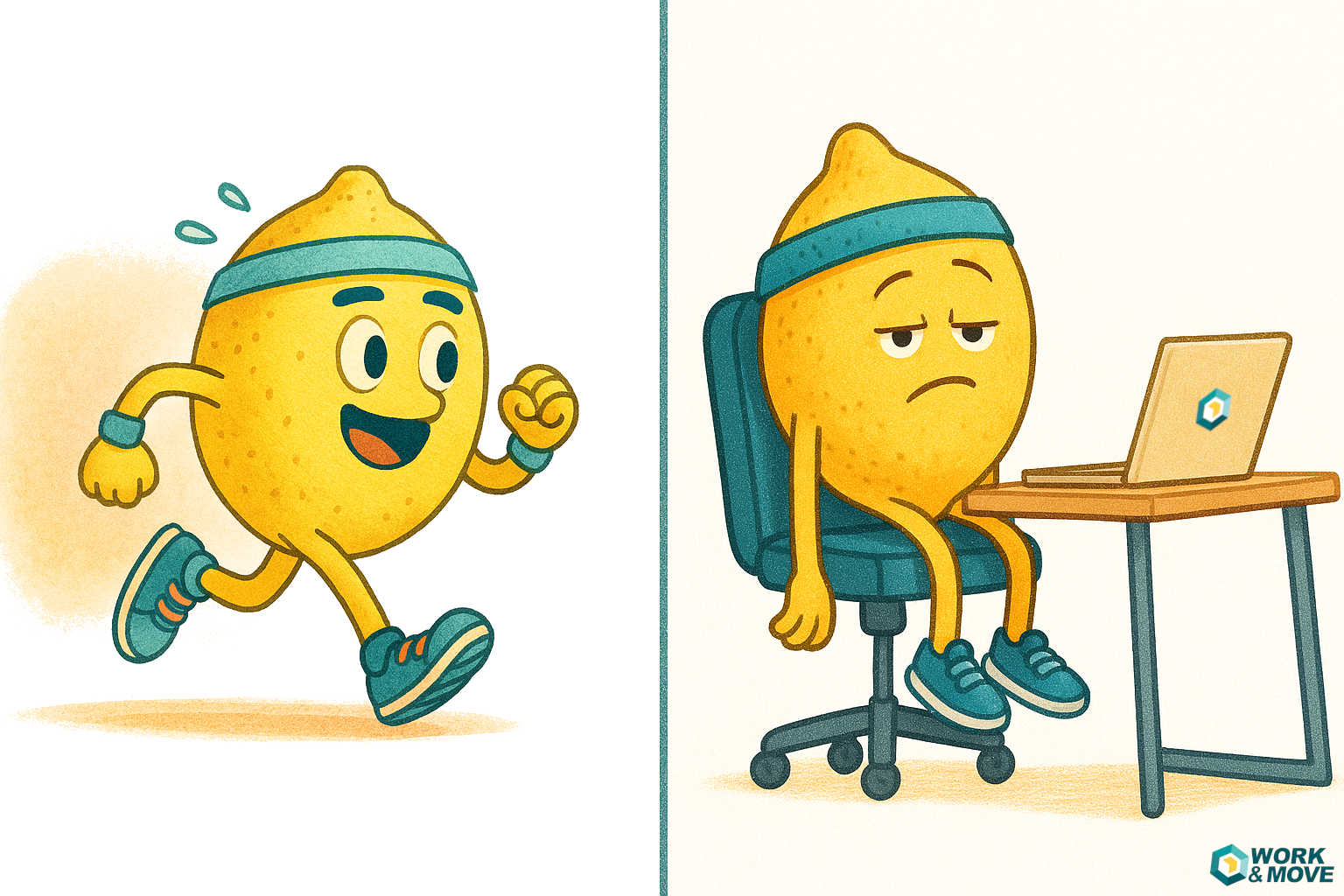
How Much Movement Do You Really Need? (Hint: More Than You Think)
You’ve probably heard the standard advice: 150 minutes of moderate activity per week. But let’s be honest - that’s not enough. The latest research shows we need at least 60 minutes of moderate movement every single day to truly offset the risks of a sedentary lifestyle and maximize health benefits. That’s about 7,000 steps daily, which can reduce your risk of early death by up to 50%, lower your risk of dementia by 38%, and cut your depression risk by 22% [Source: Lee, I-M. et al. (2025)].
And here’s the best part: There’s no such thing as “too much” moderate movement - only too little. Every step counts, and the benefits keep adding up [Source: Saint-Maurice, P.F. et al. (2022).]
Practical Tips: What Really Works (and What Doesn’t)
You don’t need to overhaul your life or buy a closet full of gadgets. But you do need a strategy that actually works in the real world - one that you’ll stick with, not just for a week, but for years.
What Works: WalkingPads and Deskbikes
Let me get personal for a moment. For years, people called me “the Bikeaholic” - not just because I’m passionate about movement, but because I invented the FitSeat, a premium deskbike designed to make movement at work effortless. But I didn’t stop there. I added a treadmill desk to my daily routine, and now I consistently hit 20,000 steps a day - without sacrificing productivity or focus.
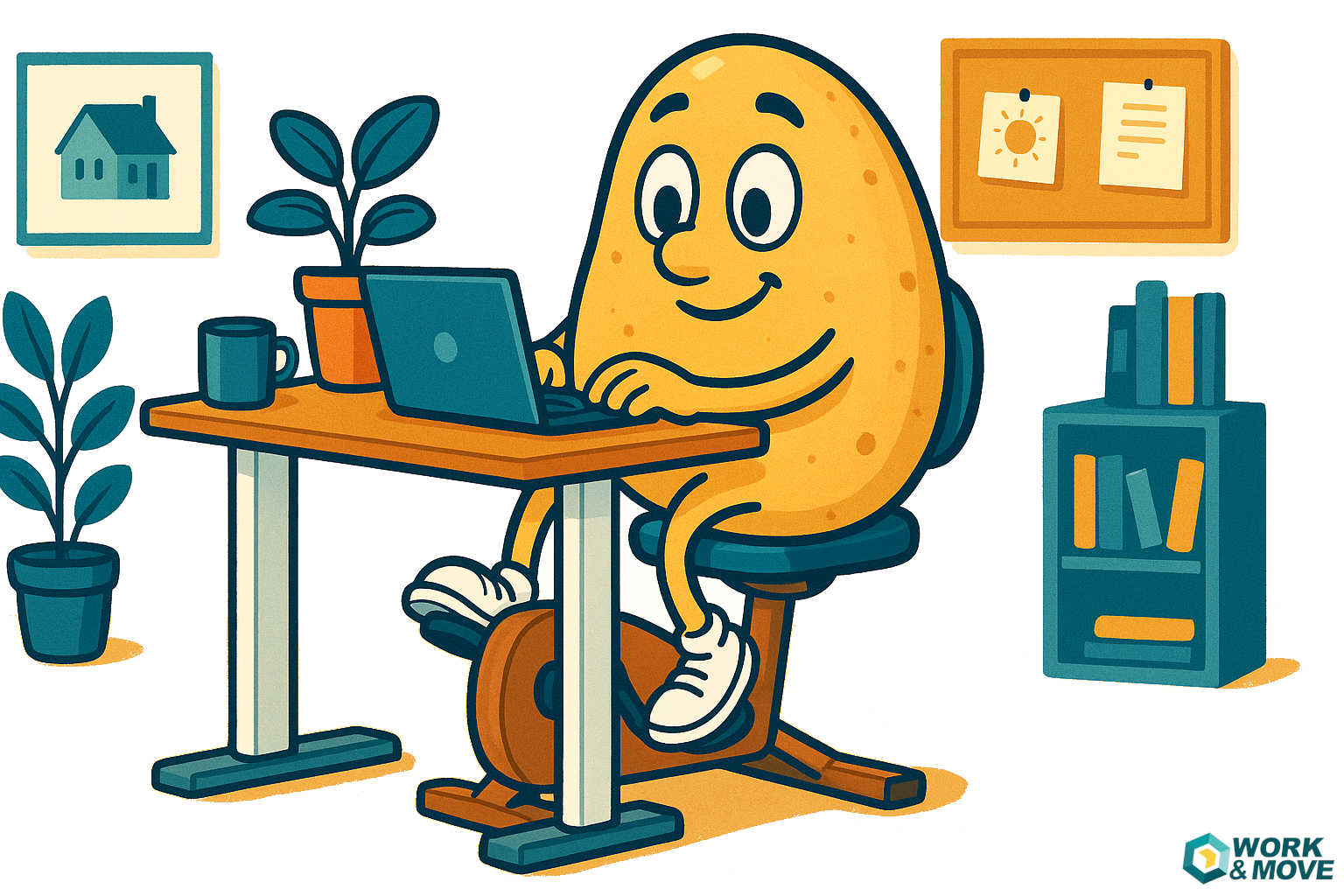
What Doesn’t Work (Long-Term): Micro-Movements, Stretch Breaks, Standing Desks, Everyday Objects
Micro-movements and stretch breaks sound nice in theory, but almost nobody does them consistently. Standing desks and everyday objects like stability balls might have their place, but they’re essentially useless if your goal is to meaningfully increase moderate physical activity. The science backs this up: sustainable, continuous movement is what counts - not sporadic stretches or standing still [Source: Dunstan, D.W., et al. (2012)]
If you want real results, invest in tools that make movement a natural, enjoyable part of your workday.
Myth-Busting: Common Misconceptions About Movement and Longevity
Let’s clear up a few myths that might be holding you back:
- “I exercise regularly, so I’m safe.”
- Not quite. Even if you hit the gym daily, long periods of sitting still increase your risk for metabolic and cardiovascular issues [Source: Ekelund, U. et al. (2016)].
- “Standing desks are enough.”
- Standing is better than just sitting, but movement is what really matters. Static standing can cause its own problems, like joint pain or varicose veins [Source: Pegg, S.J., & Pope, M.H. (2024)].
- “I’ll just move more after work.”
- If you sit for 8+ hours a day, you need to break up that time with movement during work, not just before or after [Source: Ekelund, U. et al. (2016)].
- “Moderate movement in my free time is enough.”
- Not if you’re sedentary for most of your workday. The benefits of movement are cumulative and distributed throughout the day [Source: Ekelund, U. et al. (2016)].
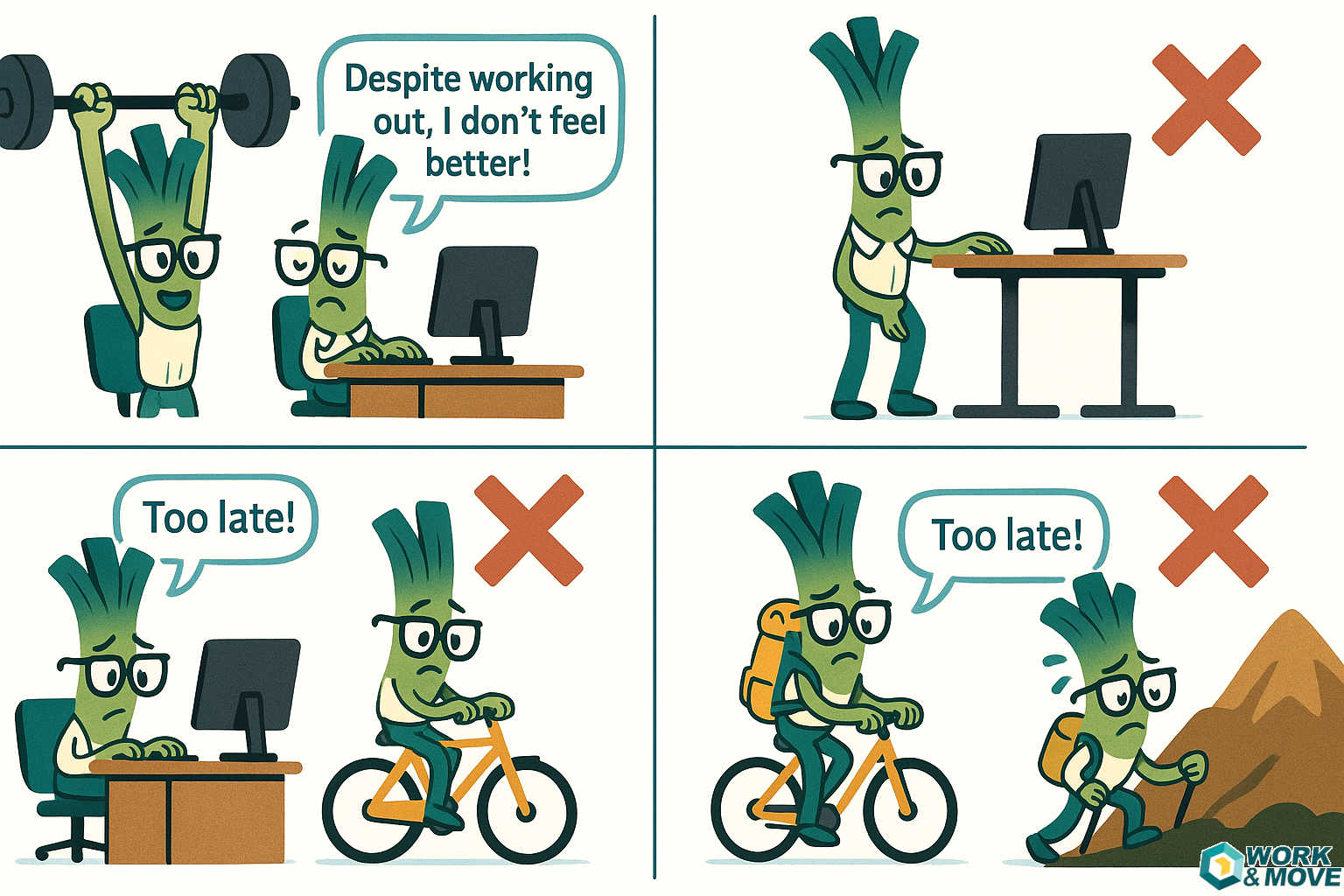
The Longevity Mindset: It’s Never Too Late to Start
Maybe you’re thinking, “I should have started this years ago.” The best day to make a change was five years ago. The second-best day is today. It’s never too late to add more movement to your life and reap the benefits.
Practical Action Plan: Move More, Live Better
Here’s a simple plan to get started:
- Assess Your Day: Track how much time you spend sitting. Awareness is the first step.
- Set Reminders: Use your phone or computer to prompt you to move every 30–45 minutes.
- Choose Your Tools: Try a WalkingPad, deskbike, or similar device that enables continuous movement while working.
- Make It Social: Invite colleagues to join you for walking meetings or movement breaks.
- Celebrate Progress: Notice improvements in your energy, focus, and mood - and keep going!
Ready to outlive your inbox? Start today- your future self will thank you. Got questions or want to connect? Click my author link, I’d love to hear from you!
References
Author: Dr. Jan Gumprecht
Making 20.000 steps a day; Helping others to increase physical activity in their daily office life; Inventor FitSeat Premium Deskbike; Co-Founder Work & Move Group; Happily Married, 3 Children; Love playing bavarian brass music (Octoberfest etc.); Rowing (Winner of German Campionship 2000); Reading 100 books a year
